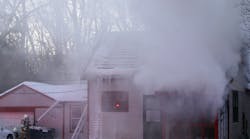On a recent road trip I had the opportunity to stop into Station 15 at a metropolitan fire department along with two colleagues who, together, comprised a peer review team for accreditation. The station was much like many career fire stations in the United States.
The one stand out factor was the captain who lamented why more departments have not embraced accreditation and its processes. What struck me as odd was that this line captain knew more about accreditation and its virtues than many. He lamented that his organization, along with many others, could tackle many of the organizational opportunities for improvement by embracing such a rigorous process. It was interesting to hear the captain "story tell" why fire departments must embrace organizational excellence to improve and watch his crew nod their heads in affirmation. Those same crew members and also a chief officer who heard the captain's impassioned pitch, no doubt pondered on its merits.
However, there is a reason why, of the approximately 30,000-plus organized fire departments in the U.S., there are only 200 accredited fire departments across 11 sovereign nations. If it was easy to challenge yourself and open yourself to transparent external review against industry best practices, many more than 200 would have done so since fire accreditation inception in 1997. However, is not every achievement worth accomplishing worth working for?
Accreditation is a comprehensive self-assessment and evaluation model that enables organizations to examine past, current, and future service levels and internal performance and compare them to industry best practices. This process leads to improved service delivery.
The Center for Public Safety Excellence's Accreditation Program, administered by the Commission on Fire Accreditation International (CFAI) allows fire and emergency service agencies to compare their performance to industry best practices in order to:
- determine community risk and safety needs and develop a community-specific Standards of Cover
- Evaluate the performance of the department
- Establish a method for achieving continuous organizational improvement
Local government executives face increasing pressure to "do more with less" and justify their expenditures by demonstrating a direct link to improved or expanded services. Particularly for emergency services, local officials need criteria to assess professional performance and efficiency. The CFAI accreditation process provides a well-defined, internationally-recognized benchmark system to measure the quality of fire and emergency services.
The challenge to each of us that represent the American Fire Service is what I have termed "WAHUT" or what actions have you taken? within your sphere of influence to elevate the continued advancement of improvements in fire service excellence. We have a rich and long tradition and history of service to community. Peter Drucker, the well respected organizational excellence guru, has been credited with stating that "what gets measured gets done."
As the Captain of the 15 house so eloquently said, "if we held ourselves to the highest industry standards- wouldn't we know we were doing the best we could with the resources appropriately allocated?"
Give it some thought!










